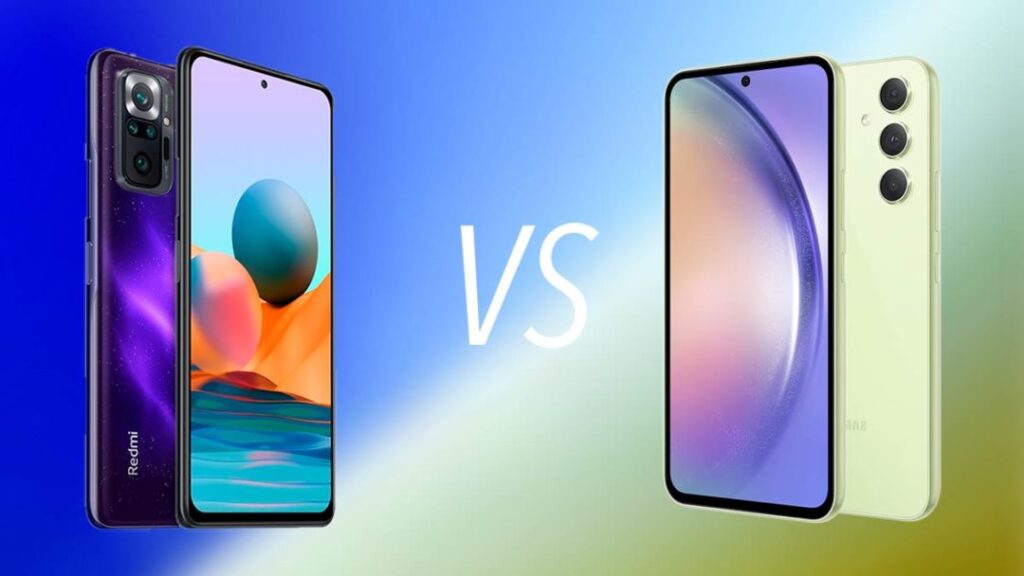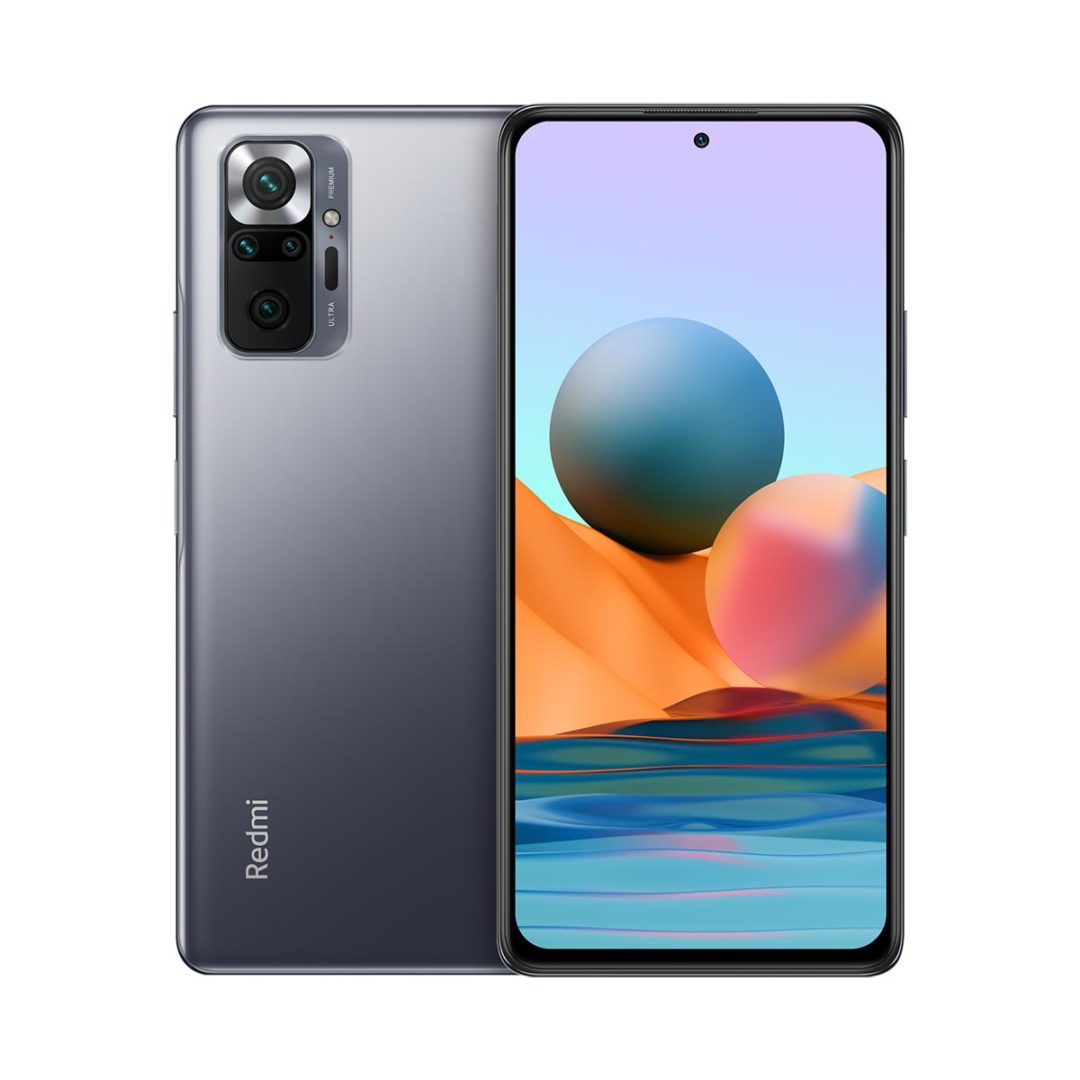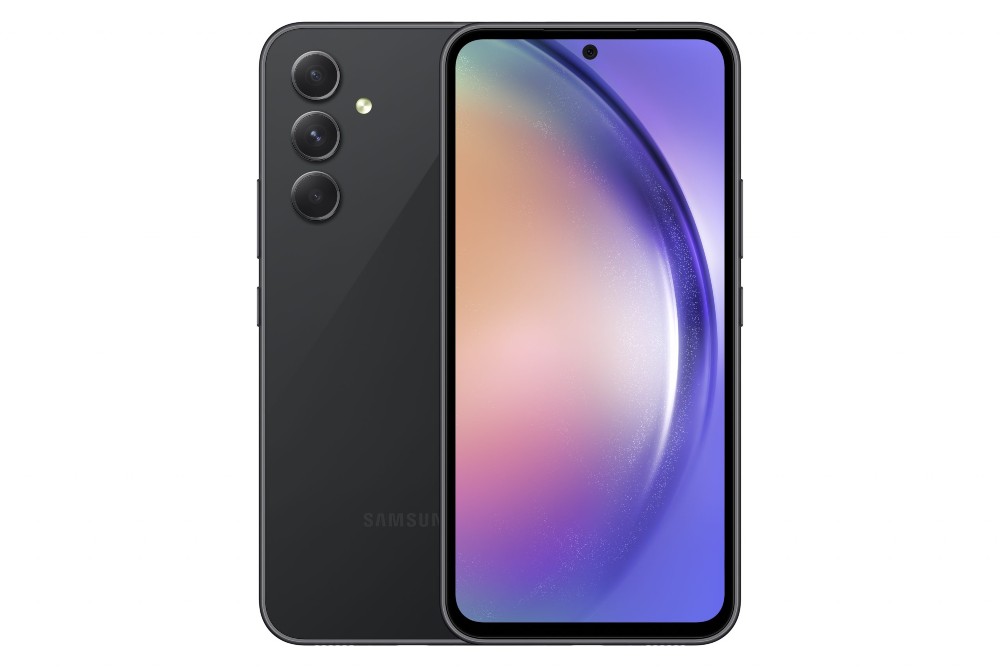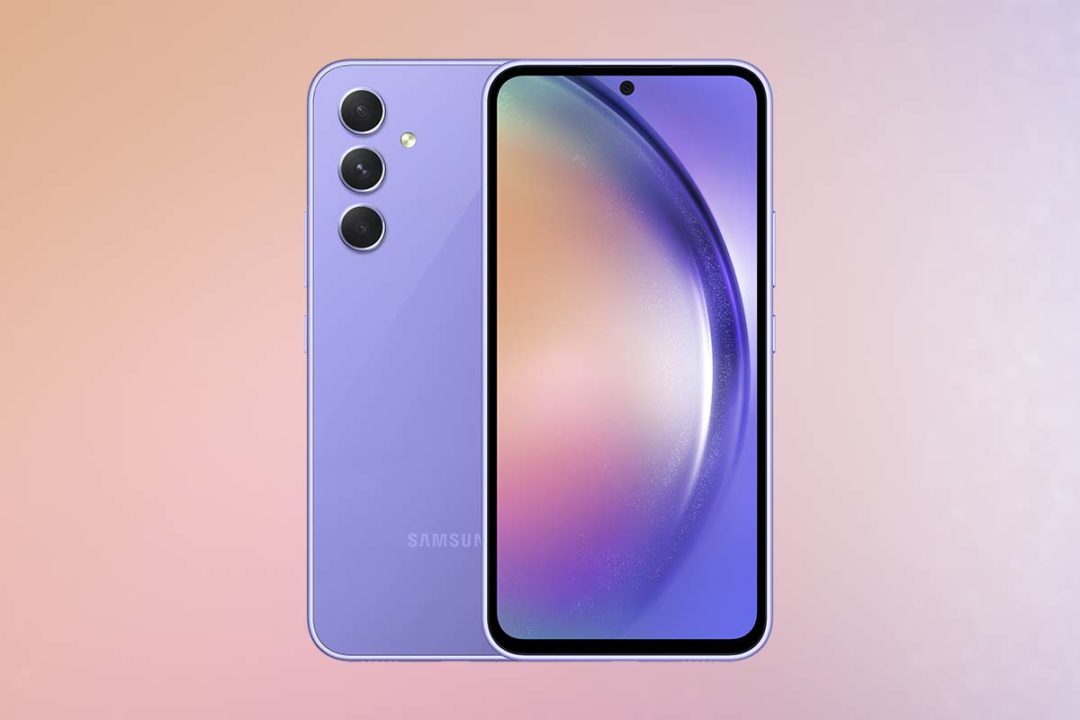Smartphones & Tablets | June 11, 2023

| Xiaomi Redmi Note 10 Pro 5G | Samsung Galaxy A54 | |
| Screen | 6.67 inches of AMOLED technology, 20: 9 format, Full HD + resolution of 2,400 x 1,080 pixels, 120 Hz refresh rate, maximum brightness of 1,200 nits, HDR10 and Corning Gorilla Glass 5 protection | 6.4 inches of Super AMOLED technology, 19.5: 9 format, Full HD+ resolution of 2,340 x 1,080 pixels, 120 Hz refresh rate, 240 Hz touch sampling rate, maximum brightness of 1,000 nits, HDR10 and Corning protection Gorilla Glass 5 |
| Main Chamber | – Main sensor of 108 megapixels with focal aperture f / 1.9 – Secondary sensor with wide-angle lens of 8 megapixels with focal aperture f / 2.2 – Tertiary sensor with telemacro lens of 5 megapixels with focal aperture f / 2.4 – Quaternary depth sensor of 2 megapixels with focal aperture f / 2.4 | – 50-megapixel main sensor with f/1.8 focal aperture capable of recording video in 4K resolution at 30 frames per second – 12-megapixel secondary wide-angle sensor with f/2.2 aperture and 123° field of view – Tertiary macro sensor 5-megapixel with f/2.4 aperture |
| Selfie Camera | 16-megapixel main sensor with f/2.45 focal aperture with video recording capability in Full HD 1080p resolution at 60 frames per second | 32-megapixel main sensor with f/2.2 focal aperture with video recording capability in 4K resolution at 30 frames per second |
| Internal Memory | 64 or 128 GB type UFS 2.2 | 128 or 256 GB type UFS 2.2 |
| Extension | Expandable via microSD up to 1 TB | Expandable via microSD up to 1 TB |
| Processor and RAM | – Qualcomm Snapdragon 732G 8 nanometer eight-core 2.05 GHz max. – 6 or 8 GB of LPDDR4 type RAM | – Samsung Exynos 1380 5 nanometer eight-core 2.4 GHz max. – 8 GB of LPDDR4 type RAM |
| Battery | 5,020 mAh with support for 33W fast wired charging (charger included in the box) | 5,000 mAh with 25 W fast wired charging (charger not included in the box) |
| OS | Android 11 under MIUI 12 | Android 13 under One UI 5.1 |
| Connections | 5G, 4G LTE, Wi-Fi 802.11 b/g/n/ac dual-band, Bluetooth 5.1, GPS + GLONASS, NFC for contactless payments, USB Type-C input and 3.5-mm headphone jack | 5G, 4G LTE, WiFi 802.11 a/b/g/n/ac/6 dual-band, Bluetooth 5.3, GPS + GLONASS, NFC for contactless payments and USB Type-C input |
| SIM | Dual nano SIM | Dual nano SIM |
| Design | Colors: white, blue and gray | Colors: black, white, blue and lavender |
| Dimensions and Weight | 164 x 76.5 x 8.1 millimeters and 193 grams | 158.2 x 76.7 x 8.2 millimeters and 202 grams |
| Featured Features | Side-mounted fingerprint sensor, stereo speakers with Dolby Atmos, infrared sensor for control of external devices, and IP53 water resistance (splashproof) | Under-display optical fingerprint sensor, stereo speakers with Dolby Atmos, and IP67 water and dust resistance (submersion proof) |
| Release Date | Available | Available |
| Price | from 300 euro | from 500 euros |
There is an indisputable truth, and that is that Samsung and Xiaomi are two widely recognized brands when it comes to mid-range devices. In the battle to stand out in the price range between 300 and 500 euros, Samsung presents its proposal with the Galaxy A54, an improved version of the successful A53. On the other hand, Xiaomi’s Redmi Note 10 Pro positions itself as one of the most popular devices from the Chinese brand, having been introduced during the midst of a pandemic. What are the differences between the Xiaomi Redmi Note 10 Pro and Samsung Galaxy A54? We have compared both devices to determine which is the best in 2023.
The choice between the Redmi Note 10 Pro and Galaxy A54 is a key issue for those users who are looking for a mobile phone in the price range of 300 to 400 euros. The differences between both models go beyond the price due to the simple fact of being presented with almost two years of difference, as we will see below.
Leaving aside the dimensions, which we will discuss later, it is evident that there are notable differences when visually analyzing both devices. Both the Galaxy A54 and the Redmi Note 11 Pro have a design that combines glass and polycarbonate, but the lines of the Galaxy A54 are more minimalist, with flat colors and a back available in pastel tones. Additionally, the camera module of the Galaxy A54 is integrated directly into the chassis, unlike the Redmi Note 10 Pro, which has a protrusion in that area.

In terms of size, although the Xiaomi model is taller, the Samsung model exceeds 200 grams, with a difference of about 10 grams compared to it. This can be largely attributed to the fact that the Galaxy A54 has an IP67 certification, making it water and dust resistant, compared to the IP53 certification of the former, which only offers some dust and splash resistance. On the other hand, the Redmi Note 10 Pro has a 6.67-inch display, while the Galaxy A54 has a smaller 6.4-inch screen.

Furthermore, the fingerprint sensor of the Galaxy A54 is located under the display, while in the Redmi Note 10 Pro, it is located on the side. The Redmi Note 10 Pro also includes a 3.5mm headphone jack. Additionally, both devices feature stereo speakers.
That’s right. When it comes to the display, the features of both devices are very similar. They both have AMOLED displays with Full HD+ resolution and a 120Hz refresh rate. The maximum brightness of both devices is 1,200 and 1,000 nits respectively, which means that the HDR experience should not differ significantly. Both devices also have Corning Gorilla Glass protection, providing similar resistance to shocks and drops. Perhaps the most notable difference lies in the color calibration that each company performs, with Samsung tending to have more saturated tones.
As expected, the Galaxy A54 is more current and powerful than the Redmi Note 10 Pro. The former is equipped with the Exynos 1380, which offers approximately 45% more performance compared to the Snapdragon 732G of the Redmi Note 10 Pro, according to tests carried out in Antutu. Both devices are available in versions with 8GB of RAM, although the Redmi Note 10 Pro also offers an additional variant with 6GB.

Regarding storage, the Samsung model starts at 128GB and can go up to 256GB, while the Redmi Note 10 Pro starts at 64GB and can go up to 128GB, in both cases using UFS 2.2 technology. On the other hand, the Samsung device supports expansion via microSD cards, allowing for increased internal storage without incurring the additional cost of higher-capacity versions. If we focus on connectivity, the Samsung A54 has a clear advantage over the Redmi Note 10 Pro as it was launched later. It features 5G, Wi-Fi 6, and Bluetooth 5.3, while its rival opts for 4G connections, Wi-Fi 5, and Bluetooth 5.1.
Furthermore, it should be noted that the South Korean manufacturer’s offering comes with a more recent version of the operating system, Android 13, while the Redmi Note 10 Pro was launched with Android 11, despite receiving updates. But it doesn’t end there: Samsung has promised to provide software updates for its mid-range devices for at least three years, providing users with a greater assurance of receiving long-term improvements and new features.
It’s time to delve into the world of cameras. Here, there is a clear contender that stands out: the Samsung Galaxy A54 vs Xiaomi Redmi Note 10 Pro. The main sensor of the Galaxy A54, with its 50 megapixels, is larger and more luminous than the 108-megapixel sensor of Xiaomi’s model. Additionally, it features optical stabilization, which offers significant improvements when recording videos or taking photos in low-light conditions. Although the resolution of the Redmi Note 10 Pro’s sensor is twice that of Samsung’s phone, in practice, it doesn’t offer real advantages as it is not capable of capturing 4K images at 30 FPS, something that the Galaxy A54 can do.

As for the rest of the cameras, both configurations are similar, with wide-angle and macro lenses, as well as a sensor dedicated to improving the Portrait mode. The resolutions range from 8, 5, and 2 megapixels on the Redmi Note 10 Pro to 12 and 5 megapixels on the Samsung A54. Additionally, Samsung’s sensors are larger, suggesting better quality compared to Xiaomi’s. On the other hand, the front camera has 16 and 32 megapixels, respectively. Like the main sensor, Samsung’s front camera can record 4K video at 30 frames per second.
In favor of Xiaomi’s model, we can say that its Qualcomm processor makes it almost natively compatible with GCam, the famous camera application modified by the community.
Let’s now move on to the battery and charging, where the Xiaomi Redmi Note 10 Pro takes the victory for various factors. Xiaomi is known for including the charger in the box, something that the Samsung model does not offer. Not only that, but the Chinese manufacturer’s offering provides up to 33W of power, while the South Korean company is limited to offering a meager 25W.
As for battery life, both devices have a 5,000mAh battery, so there shouldn’t be a significant difference in this aspect unless we consider factors such as the screen size or the energy efficiency of the processor. Perhaps Samsung’s offering is slightly superior, but it all depends on the real-life usage of the device.

We now come to the price, opinions, and conclusions. Xiaomi Redmi Note 10 Pro or Samsung Galaxy A54? Considering all the differences mentioned, we also have to take into account the current prices of both devices. On Amazon, the available offers are as follows:
Given that the price difference exceeds 100 euros, the question arises as to whether the Samsung Galaxy A54 is worth it. The truth is, at that price, it’s hard to find any major shortcomings in the device. While there are indeed better and more powerful alternatives, we must consider that the manufacturer promises updates for three or four years. Another factor to consider is that the Xiaomi model has been on the market for over a year, so it is likely to stop receiving support earlier than the Samsung model.
Furthermore, aspects such as camera quality, water and dust resistance, or the more compact size of the Galaxy A54 could tilt the balance in favor of this phone. The question is, is it significantly better than the Redmi Note 10 Pro at a nearly 200 euro higher price? Only your budget can answer that question.